1. CNN (UK) – Virtual businesses: Going to the office in Second Life. “As travel budgets are squeezed and slashed in the recession, companies are increasingly seeking innovative ways of bringing employees together for conferences and meetings remotely. Virtual community Second Life is seeking to tap into that market by creating a new tool that allows businesses to have virtual meetings on their own computer networks. The company’s Enterprise tool will let employees’ avatars — animated alter egos — meet in virtual worlds from the privacy of a company’s own network, rather than the public networks used in standard Second Life. That extra security could encourage more companies to take up the technology.”
2. Boston Globe (USA) – To build up real business selling virtual goods, firms change tactics. “ust after Labor Day last year, Pano Anthos flew out to San Francisco to unveil his new start-up, Hangout Industries Inc., at a major technology conclave, the TechCrunch50. It was an opportunity to show off the three-dimensional virtual environment his Boston company had been working on, intended to attract young Internet users and allow them to deck out online rooms with all sorts of branded merchandise – some of which they might also decide to buy in the real world. Then, they could invite friends over to socialize. Hangout, Anthos told the crowd, would combine some of the best elements of MySpace and Facebook, the two massive social networks, and The Sims, a popular video game. After his presentation, Anthos got feedback – much of it positive – from a panel of on-stage experts that included Marissa Mayer, a senior executive at Google, and Ron Conway, one of the investors who bankrolled the search company in its earliest days.”
3. Reuters (USA) – Can Virtual Worlds Provide Support to Military Amputees? “Virtual worlds can provide military amputees with an opportunity to enhance their overall quality of life, expedite their reintegration into society, and improve their physical and mental wellness. ADL Company Inc. (ADL) and Virtual Ability, Inc. (VAI) announced today the start of a project to establish best practices and protocols for the provision of on-line peer-to-peer support services to this community, with funding from the Telemedicine and Advanced Technology Research Center (TATRC) of the US Army Medical Research and Materiel
Command (USAMRMC). “For individuals with disabilities, virtual worlds are a powerful way to connect with others, to access peer support, and to participate in activities that might not otherwise be possible,” said Alice Krueger, President of Virtual Ability, Inc., a not-for-profit corporation. “This project will establish the best way to adopt this technology for the unique needs of the military amputee community.”
4. New York Times (USA) – Virtual Estates Lead to Real-World Headaches. “Two avatars, Leto Yoshiro and Enchant Jacques, met in the virtual world of Second Life in 2005. They married online the same year and built a house together on an island they had brought out of the waves that covered much of that world. In real life, Leto was a film producer from Michigan, Enchant an accountant from England. In 2008, after three years together for the couple, several real-life encounters and thousands of hours logged in, Leto died of liver failure while awaiting a transplant. About six months later, the island where they had lived, along with everything on it, was erased under the terms of service that Leto had signed with Linden Lab, the company that created the platform for Second Life. It had been bought in his name in Linden dollars — on Friday, $1 bought 259 Linden — and Enchant decided she could not pay the fees to maintain it. All that remains are a few objects of which she had copies.”
5. New Scientist (USA) – How your brain sees virtual you. “As players who stay up all night fighting imaginary warriors demonstrate, slipping into the skin of an avatar, and inhabiting a virtual world can be riveting stuff. But to what extent does your brain regard your virtual self as you? Brain scans of avid players of the hugely popular online fantasy world World of Warcraft reveal that areas of the brain involved in self-reflection and judgement seem to behave similarly when someone is thinking about their virtual self as when they think about their real one.”
6. VentureBeat (USA) – Max Levchin on Slide’s big virtual goods bet, scams and — mating. “Slide, which started in photo-sharing, moved into Facebook widgets and then raised funding at a reported $550 million valuation last year, shifted gears this year and went aggressively into virtual goods. The company’s looking to become a mainstream version of Second Life, where there’s a virtual economy at work of real people buying and selling goods. Instead of churning out new apps like many of its competitors, the company has focused its existing ones — including seven on Facebook like SuperPoke, Top Friends and FunSpace, with about 27 million users between them. Slide introduced a virtual currency into its SuperPoke! Pets application, where you can raise and care for a virtual pet. You can earn gold through the game or you can purchase 10 pieces of Slide Gold for $1.”
7. Massively (USA) – Exclusive interview with Linden Lab CEO Mark Kingdon. “Mark Kingdon, Linden Lab’s CEO, has been a bit of a mystery figure since his appointment about a year and a half ago. While he has not been uncommunicative, it’s been hard to get a very good sense of the man at the helm of Linden Lab, his passions, interests and direction. We were very pleased, therefore, when he took the time to sit down with us and answer a whole grab-bag of questions, about himself, about Linden Lab, and – of course – about Second Life. Bear with us, because we’ve got a lot of ground to cover.”
8. Kotaku (USA) – Visually Impaired Gamer Sues Sony. “GameSpot reports that a man has sued Sony, Sony Online Entertainment and Sony Computer Entertainment of America, contending the company violates the Americans with Disabilities Act for not making its virtual worlds more easily navigable by the visually impaired.”
9. Data Center Knowledge (USA) – Virtual Goods and the Cost of Infrastructure. “In an economy built atop virtual goods, how do you manage capacity and sort out whether the business model is able to pay for the infrastructure required to power it? That’s an important questionas as virtual item purchases become a key revenue stream for fast-growing social networking platforms like Facebook. Managed hosting specialist GNi, which offers an Infrastructure as a Service (IaaS) hosting platform for online games, offers a window into the evolving infrastructure requirements of virtual economies. In the U.S., popular understanding of online gaming has been shaped by the popularity of World of Warcraft and other virtual worlds that generate through monthly subscription fees. That approach is increasingly yielding to a “free-to-play†business model.”
10. TechCrunch Europe (Germany) – 20 years on, explore the Berlin Wall in Twinity’s virtual Berlin. “With only days away from the 20th anniversary of the fall of the Berlin Wall, how best to mark the occasion? Rebuild it or at least a virtual two kilometer stretch. That’s the approach being taken by Metaversum, the Berlin-based company behind virtual world Twinity, who have constructed a replica section of the wall in-world. Visitors to Twinity’s virtual Berlin will be able to travel back to 1989 to explore a two km-long, true-to-scale section of the Berlin Wall, from the Reichstag, past the Brandenburg Gate and Potsdamer Platz, ending with a realistic replica of Checkpoint Charlie. Along with the wall itself, visitors can also access various multimedia content, including video and audio guides at seven key points describing the building of the wall, important dates in its history, witness accounts and, of course, the climatic events of 1989. The exhibition is a collaboration between Metaversum, the Berlin Senate and media partner Berlin.de.”
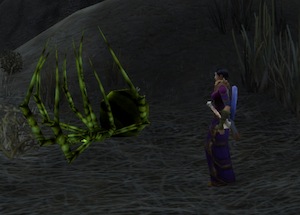 1. The announcement of
1. The announcement of 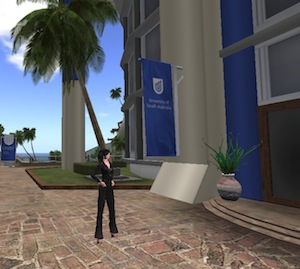
 Denlee: Actually it was the reverse. Some saw it as inappropriate because it was too much like play – almost as if they had preconceived ideas about what is a valid or authentic learning environment.
Denlee: Actually it was the reverse. Some saw it as inappropriate because it was too much like play – almost as if they had preconceived ideas about what is a valid or authentic learning environment.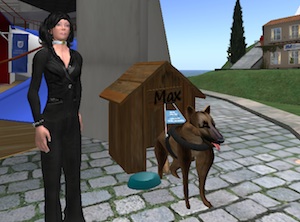 Denlee: We will no doubt continue to maintain our UniSA island here – we are planning to trial using our island to facilitate career building – running careers fairs and so on. We are also undertaking research in the area of performing arts and hybrid performance. Intermediality – where actors on a “real life†stage perform with actors in SL.
Denlee: We will no doubt continue to maintain our UniSA island here – we are planning to trial using our island to facilitate career building – running careers fairs and so on. We are also undertaking research in the area of performing arts and hybrid performance. Intermediality – where actors on a “real life†stage perform with actors in SL.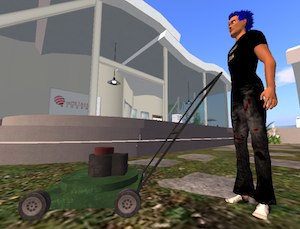 Although it’s mostly a throwback to the mid to late 20th Century, there’s still a significant cohort of Australians who associate mowing the lawn with the ‘Aussie lifestyle’ (I hate generalisations, but bear with me). There’s no shortage of people who still dream of owning their own land, on which they can inflict the weekly spring and summer routine of mowing the lawn. Last weekend I had the opportunity to do some lawn mowing, and it occurred to me that for widepsread adoption of virtual environments to occur, the in-world experience needs to be a lot more like mowing the lawn. Keep reading to see a metaphor beaten within an inch of its life.
Although it’s mostly a throwback to the mid to late 20th Century, there’s still a significant cohort of Australians who associate mowing the lawn with the ‘Aussie lifestyle’ (I hate generalisations, but bear with me). There’s no shortage of people who still dream of owning their own land, on which they can inflict the weekly spring and summer routine of mowing the lawn. Last weekend I had the opportunity to do some lawn mowing, and it occurred to me that for widepsread adoption of virtual environments to occur, the in-world experience needs to be a lot more like mowing the lawn. Keep reading to see a metaphor beaten within an inch of its life.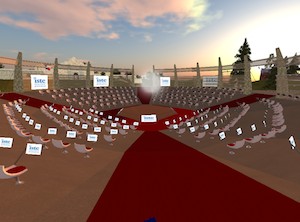
Recent Comments